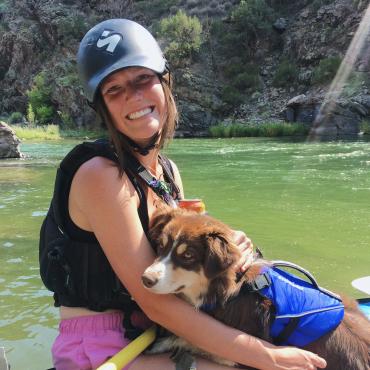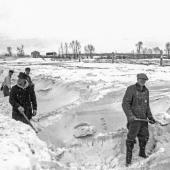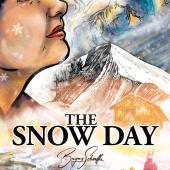Live Fast, Die Young
The life of a Western legend.
A story that reverberates through the annals of Old West history, “Calamity Jane” is a saga of the rugged, unpredictable, and often chaotic spirit of frontier life.
Martha Jane Canary was born in Princeton, Missouri in 1852, the eldest of six children. Martha’s journey West began at an early age: in 1863, the Canary family headed to Virginia City to chase gold and the promise of free land. During the five-month trip, Martha assisted on several hunting outings with men in her caravan—her fearless personality, strength, and impressive riding and shooting skills became apparent to all. The family faced hail and lightning storms, food shortages, water pollution, and livestock loss, but arrived at their long-awaited destination in October of 1863.
The Canary family settled in Virginia City, amidst other hopeful miners, as well as vigilantes and outlaws that put the town in a constant state of violence. In 1866, Martha’s mother, Charlotte, fell ill and was buried northeast of Deer Lodge. Now a single parent, Martha’s father, Robert, relocated the family to Salt Lake City. Later that summer, Robert also fell ill and was buried in 1867, making Martha Jane an orphan by the age of 15. Her three youngest siblings were adopted out, leaving her the head of her remaining family. Martha Jane’s early life was nearly as rough as the territories she would later come to roam.
Known for being a good shot and for her horsemanship, Calamity Jane was also notorious for her frequent visits to saloons and gambling halls.
The responsibility of caring for her younger siblings perhaps contributed to her later tough-as-nails persona. She left Salt Lake for Wyoming in 1868, apparently dropping the name “Martha” and going by Jane.
During her drift across the West during the 1860s and 1870s, Jane opted for men’s clothing over dresses and worked as a laborer, scout, bullwhacker, miner, and stage-driver—all while traversing the harsh terrain of Wyoming, South Dakota, and eastern Montana. During these years, legend has it that her reckless and daring riding habits donned her the nickname “Calamity Jane—the heroine of the plains” by Captain Pat Egan, after she rode in to rescue him in the midst of a battle in Wyoming.
But she never stayed in one place for long. Following the Northern Pacific Railroad, Calamity Jane made her way back to Montana in the 1880s, landing in Billings in 1882. That summer, she moved to a ranch in the Yellowstone Valley, and months later ran a dance hall in Livingston. Getting antsy after only a few months, though, she made for Wyoming again in 1884.
Known for being a good shot and for her horsemanship, Calamity Jane was also notorious for her frequent visits to saloons and gambling halls, where she spun tales of her exploits, often blurring the lines between fact and fiction. While many of her tales are difficult to verify, they nonetheless contributed to the mythos surrounding her character. Her wild reputation takes the reign, but her compassionate side doesn’t go unacknowledged either, as she often cared for the sick and downtrodden, a trait that endeared her to many.
Despite her widespread fame, Jane's final years were burdened by hardship and declining health.
By the late 19th century, Calamity Jane appeared in several Western traveling shows, all showcasing her sharpshooting skills and frontier tales to an international audience. Her relationship with the notorious Wild Bill Hickok further cemented her fame, although it is unlikely that their connection was as intimate as she claimed—most historians suggest it was more platonic than romantic.
Despite her widespread fame, Jane's final years were burdened by hardship and declining health, reflecting the harsh realities of the life she had led. Calamity Jane spent her final years in Deadwood, South Dakota, where she was admired for her compassionate nursing of local residents during the smallpox epidemic.
In 1903, Calamity Jane passed away and was buried beside Wild Bill Hickok, fulfilling her last wish. Today, her gravesite continues to attract those drawn to the legends of the Old West. A woman who was as complex as she was compelling, Calamity Jane was a true embodiment of the spirit of the American West.














